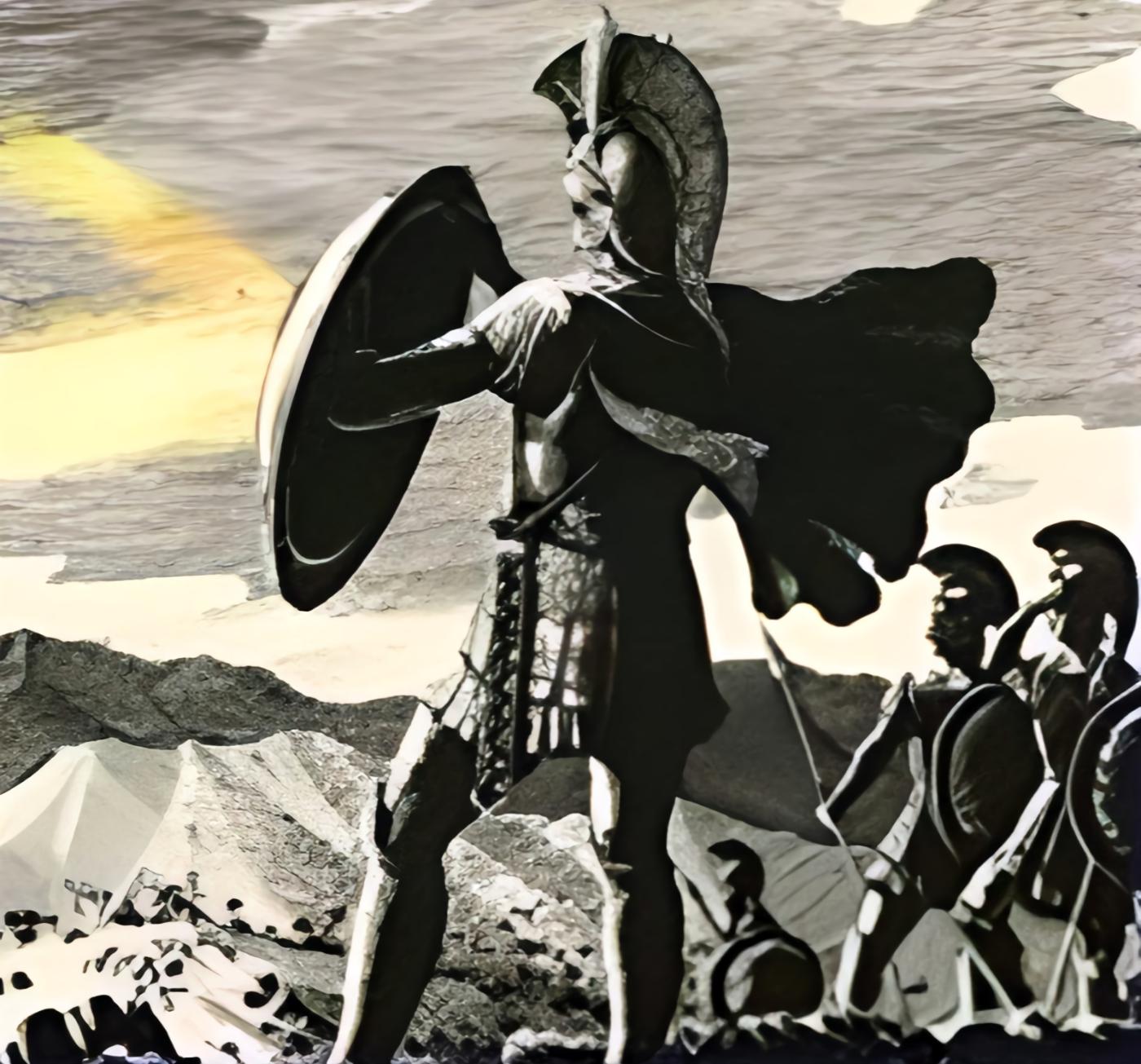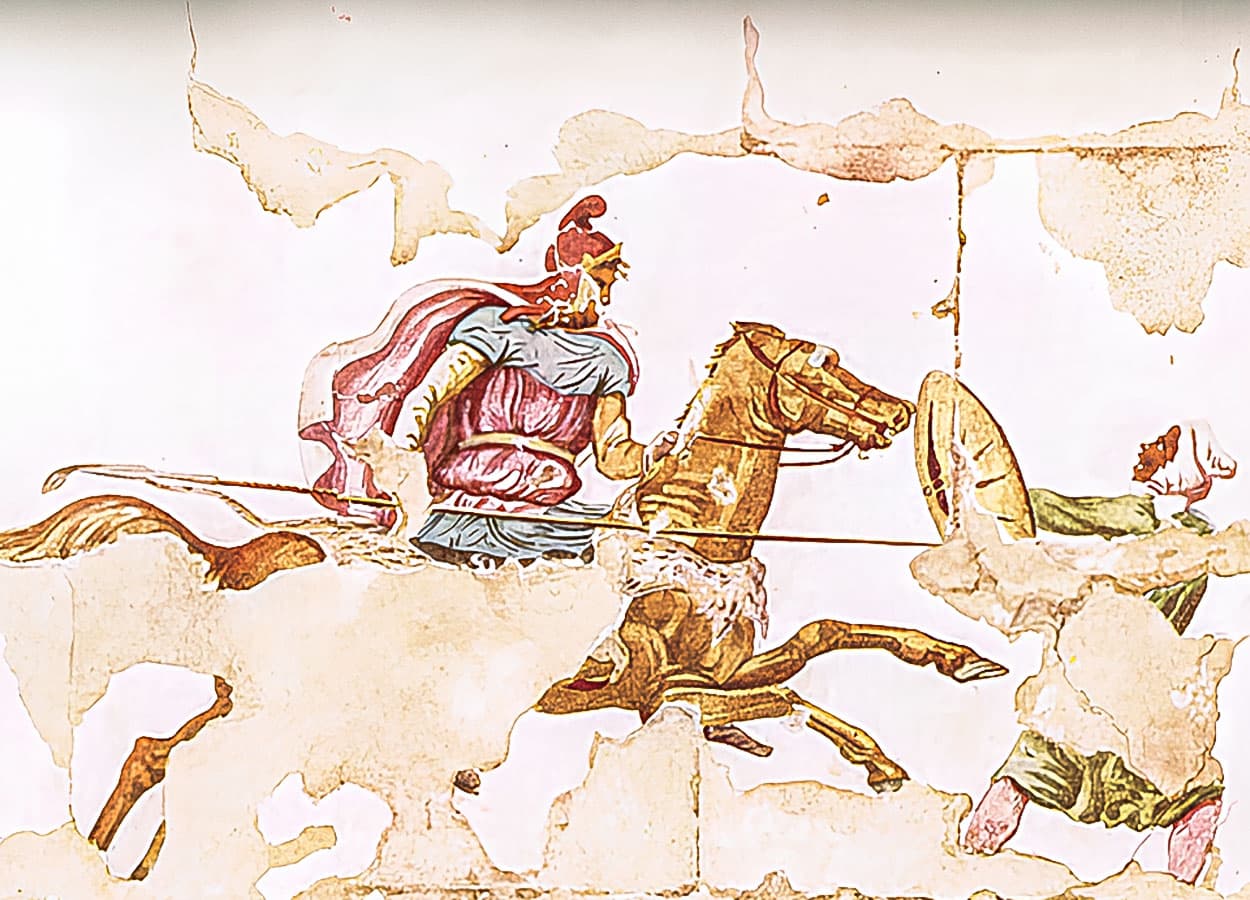Panoply was the name of the set of armor worn specifically by Hoplites and other heavy soldiers in ancient Greece. The word is “panoplia” in Ancient Greek and it literally means “complete armor,” from pan “all” and hoplon “weapon.” It actually meant the complete arsenal of gear used by the Hoplites, the citizen-soldiers of Ancient Greece who fought in phalanx formation.
–> See also: Sarissa: The Ancient Spear of the Greek Phalanxes
Description of the Panoply
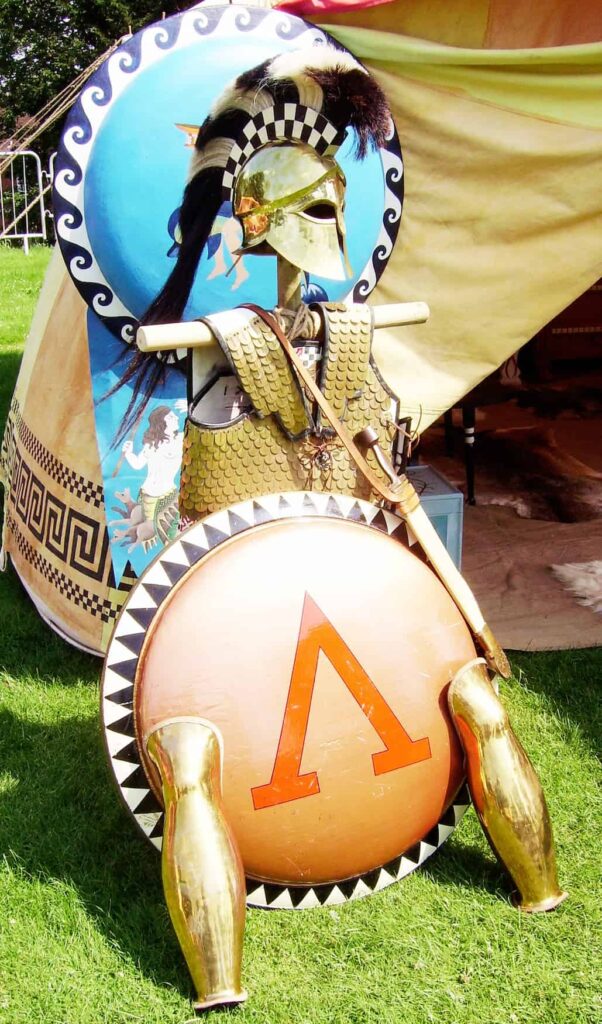
The Hoplite’s full arsenal of Panoply included both offensive and defensive pieces of equipment. These were typically a short sword, a long spear, a large helmet, a mid-sized shield, and a modest breastplate. The weight of the whole panoply of armor and weapon wore by the Hoplites was around 48 to 77 pounds (22–35 kg).
Hoplites often buy their panoply themselves or it could be passed down in families. These pieces included:
- Shield (Aspis): This was approximately 40 inches (1 m) in diameter.
- Armor (Linothorax or Muscle Cuirass): This was made of linen or bronze.
- Helmet (Kranos): This was typically of the Corinthian or Phrygic type.
- Thrusting Spear (Dory).
- Short Sword (Xiphos) or Slashing Sword (Kopis).
- Breastplate (or Corselet): This was usually 0.50 inches thick (1.3 cm) and made of bronze.
- Greaves: These were made of leather or bronze.
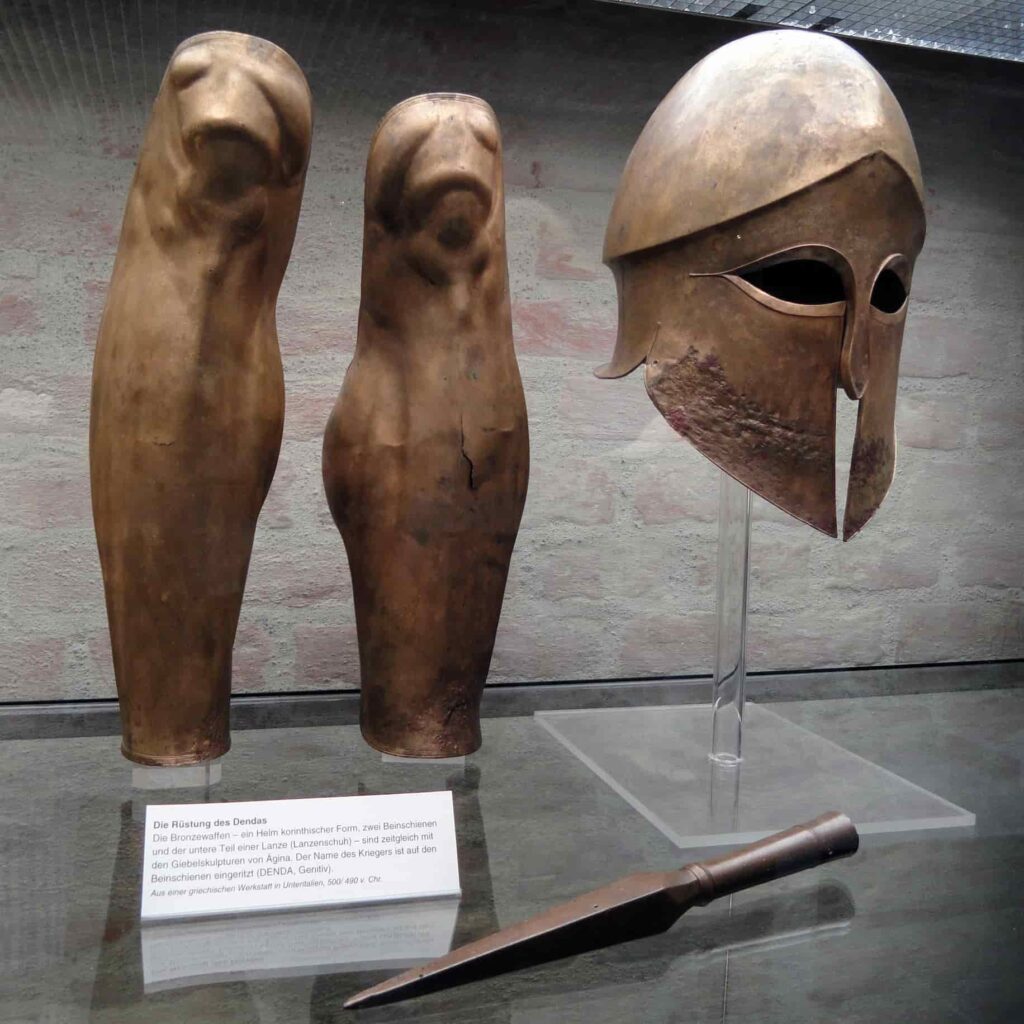
From a Greek workshop in South Italy, 500–490 BC.” class=”wp-image-43725″/>
–> See also: Xyston: The Ancient Greek Spear Used by Alexander
Evolution of The Term
In ancient Rome, after a victory, the captured weapons were decoratively placed under the armor of the defeated commander. The word panoply was later used to describe the decorative trophies and themes seen in the friezes of numerous Roman structures. In the centuries that followed, these designs became popular wall decorations.
End of the Late Middle Ages
During the early modern period (c. 1500–1800), the military officers called back on this ancient Greek term and put it into reuse to refer to a full suit of plate armor covering the whole body of a soldier.
Modern Times
However, it didn’t end there; later in modern times, the term “panoply” has evolved to mean any comprehensive or extensive collection of things because of its original meaning of a “complete series of various components” in ancient Greek. Examples today include anything such as “panoply of flags” or “panoply of ideas“.
In Art
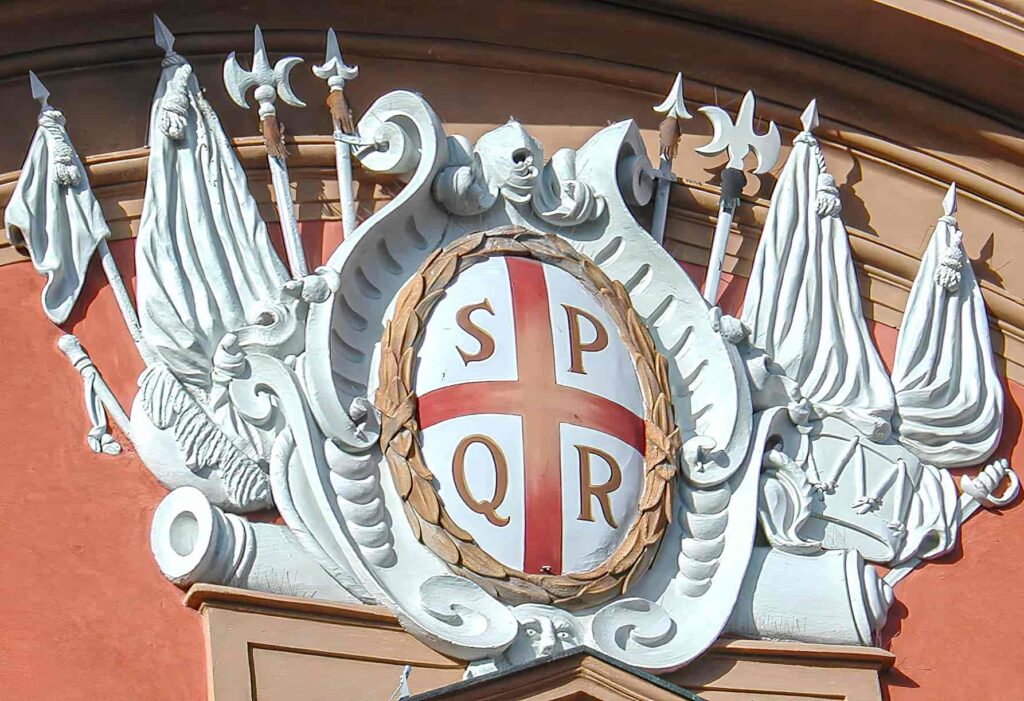
In Renaissance and Baroque art, panoply was a decorative composition of elements of ancient armor, shields, weapons, and flags (reminiscent of the ancient Roman tradition mentioned above).
The Panoply carved in stone, was used as an element of decoration on facades and interiors. It often appeared in coats of arms and military decorations.



